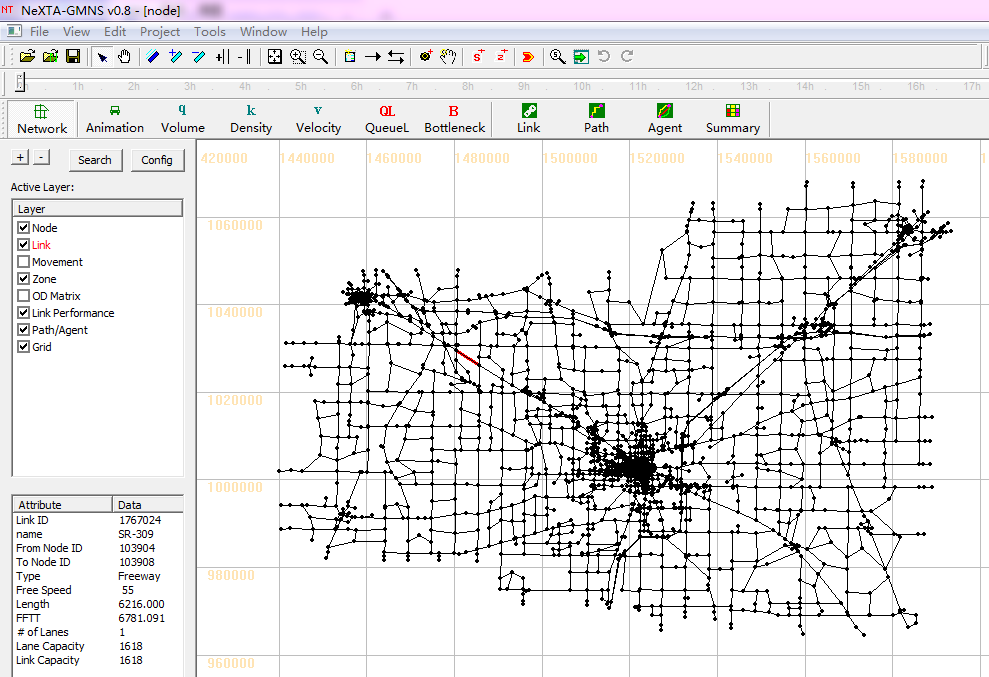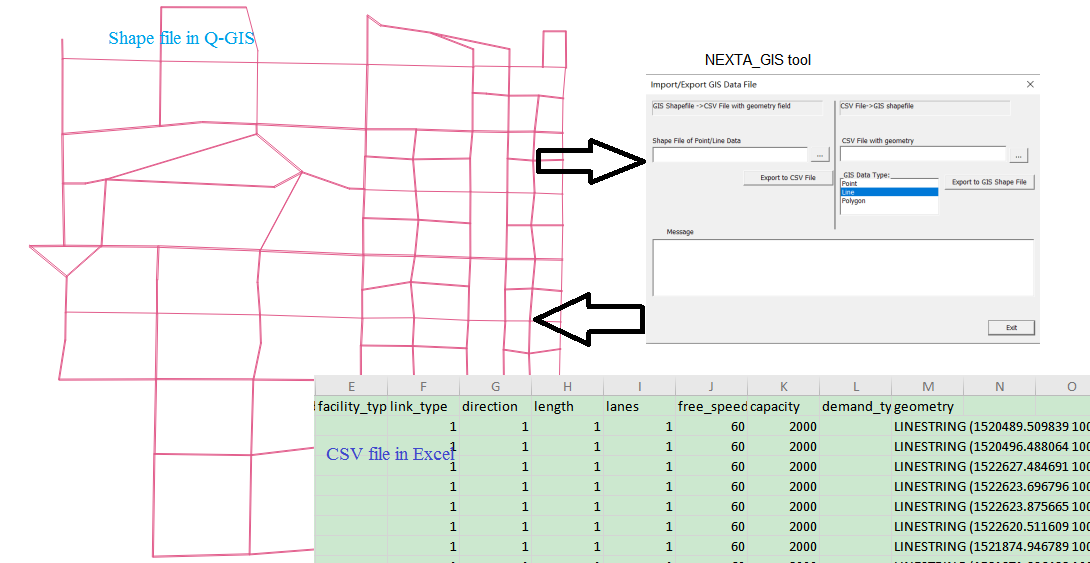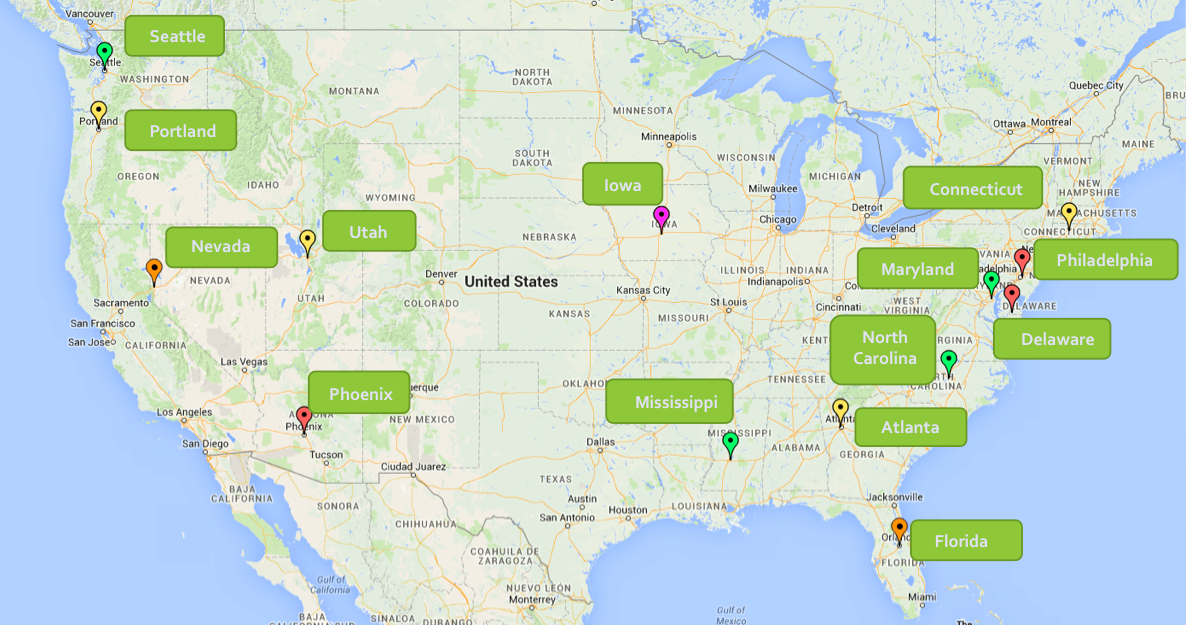NeXTA-GMNS
Open-source Network EXplorer for Traffic Analysis (NeXTA) Graphical User Interface for General Modeling Network Specification (GMNS)
####Contact: Dr. Xuesong (Simon) Zhou at Arizona State University. Email: xzhou74@asu.edu
#What is GMNS? General Travel Network Format Specification is a product of Zephyr Foundation, which aims to advance the field through flexible and efficient support, education, guidance, encouragement, and incubation. Further Details in https://zephyrtransport.org/projects/2-network-standard-and-tools/
#Goals of NeXTA development
- Provide an open-source code base to enable transportation researchers and software developers to expand its range of capabilities to various traffic management application.
- Present results to other users by visualizing time-varying traffic flow dynamics and traveler route choice behavior in an integrated environment.
- Provide a free, educational tool for students to understand the complex decision-making process in transportation planning and optimization processes. The lowercase letter "e" in NeXTA stands for education.
#How to use Latest Software Release 04-20-2020
Step 1: Download software package from "release" folder
https://github.com/xzhou99/NeXTA-GMNS/tree/master/releases
Use file menu->open to open file node.csv to visualize the simple GMNS Lima sample data set

Step 2: Check out the standard GMNS data sets at
https://github.com/zephyr-data-specs/GMNS/tree/master/Small_Network_Examples/Lima/GMNS
https://github.com/xzhou99/NeXTA-GMNS/tree/master/examples/GMNS_Small_Network_Examples/Lima/GMNS
Step 3: Build your own GMNS data set.
A simple 6-node example with agent files can be found at https://github.com/xzhou99/NeXTA-GMNS/tree/master/examples/GMNS_AMS_Networks/6-node_network
#Other capabilities of NeXTA
-
Create, edit, store, and visualize transportation network data in GMNS format.
-
Simulation and visuailiing dynamic assignment outputs or sensor data based on file link_performance.csv and agent.csv.
 sample data set:
https://github.com/xzhou99/NeXTA-GMNS/tree/master/examples/GMNS_AMS_Networks/Sioux_Falls_network
sample data set:
https://github.com/xzhou99/NeXTA-GMNS/tree/master/examples/GMNS_AMS_Networks/Sioux_Falls_network
3 NEXTA provides an excellent multi-project management interface with the following features.
-
Synchronized display
-
Compare link moe across different networks
-
Vehicle path analysis across different simulation results
- NEXTA also can support the conversion between GIS shape file and user-defined CSV files.
https://github.com/xzhou99/NeXTA-GMNS/tree/master/tools/GIS_shape_file_CSV_file_conversion

DTALite
The related open-source software, DTALite, uses a computationally simple but theoretically rigorous traffic queuing model in its lightweight mesoscopic simulation engine. Its built-in parallel computing capability dramatically speeds-up the analysis process by using widely available multi-core CPU hardware. It takes about 1 hour to compute agent-based dynamic traffic equilibrium for a large-scale network with 1 million vehicles for 20 iterations. https://github.com/xzhou99/dtalite_software_release
- typical network: 2000 traffic zones, 200000 links, 2-10 million vehiches
